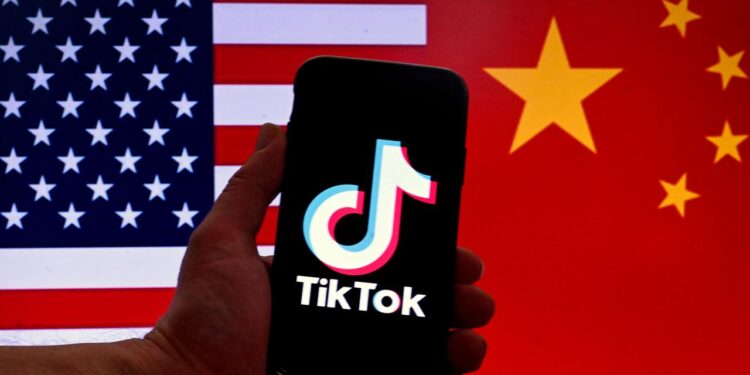With more than 170 million active users in the United States and an anticipated $12.3 billion in ad revenue for this year, TikTok seems to have every reason to celebrate. The introduction of TikTok Shop and live-stream commerce is transforming the app’s business framework, steering it in a considerably different direction than its original format.
TikTok: The ‘cultural hub’ of a flourishing creator economy
As it marks its eighth year on American devices, TikTok now positions itself as the “cultural hub of the internet,” where users unite to interact, create, and shop. Evolving significantly from its initial focus on brief entertainment, TikTok has become a robust center for engagement, compelling users to consume content, while creators can generate substantial revenue through ads and sales.
The platform’s demographics, with 60% of its user base consisting of Gen Z, are tapping into a competitive creator economy valued at $250 billion, potentially reaching $500 billion by 2027. Young talents across various fields such as acting, fashion, and music have gravitated towards TikTok, utilizing its extensive reach to kickstart their careers and gain exposure. Reports suggest that 54% of TikTok users identify as part-time creators, with most able to access specific monetization benefits.
TikTok Shop is emerging as a pivotal element of TikTok’s evolution beyond just quick video content in the U.S., revitalizing a concept many believed had faded—the idea of teleshopping. The Chinese variant, Douyin, has been breaking new ground in social commerce for years, turning the app into a never-ending exhibit of products and sales messaging. Projections indicate that Douyin generated approximately $21 billion in advertising revenue in 2023, in alignment with almost every other Chinese social platform that emphasizes e-commerce.
TikTok advances its TikTok Shop initiatives
According to Business Insider, TikTok is now concentrating on establishing a similar initiative in the United States, with its entire team focused on enhancing its e-commerce strategies. In September, Douyin and ByteDance are reported to have flown U.S. TikTok Shop partners to Shanghai and Hangzhou for engagements with regional teams and familiarization with the studios where shopping content is produced, aimed at boosting holiday sales. The app also convened shop partners from 200 agencies in Culver City, California, for a day of discussions and feedback on affiliate marketing and live selling techniques. However, the question remains whether this model can thrive in the U.S. and if users will embrace the changes.
Despite forecasts estimating $50 billion in gross merchandise value from its commerce initiative this year, a major unresolved issue looms for the app: its continued existence. A federal appeals court recently upheld a decision allowing for a law that could prohibit TikTok from operating in U.S. app stores. The ban, endorsed by Congress and President Biden earlier this year, requires ByteDance, the Chinese parent company of TikTok, to either divest the app or shut it down in the U.S. by January 19 of next year.
In March, the House of Representatives supported the Protecting Americans from Foreign Adversary Controlled Applications Act in an effort to mitigate national security threats posed by apps like TikTok, reflecting growing concerns regarding data security and foreign influence.
On Monday, TikTok requested an emergency injunction, with its attorneys urging the U.S. Court of Appeals for the District of Columbia to consider the implications of such a ban just a day prior to a presidential inauguration. Meanwhile, the Department of Justice (DOJ) is advocating for the dismissal of this legal motion.
The uncertain future of TikTok should encourage creators to seek new avenues
Though TikTok may not be achieving record user growth anymore, as numbers have decelerated compared to 2023 and 2022, it still ranks among the world’s most influential social media platforms. While acquiring the app could mitigate the threat of a ban, now is a critical time for creators and marketers to expand their horizons beyond TikTok.
Emerging platforms like Instagram Reels, YouTube Shorts, and Snapchat’s Spotlight introduce new algorithms, audiences, and opportunities. As TikTok continues to adapt, creators and brands must remain flexible. The social media terrain is continuously evolving, with fresh platforms capturing audiences and launching new voices. Staying ahead requires mastering the game.
TikTok now compensates creators less generously than before, restricting monetization opportunities primarily to those with substantial followings or significant investments in commerce. “Contrary to common assumptions, TikTok creators do not generate significant income solely from views. The payments from the creator program are merely a fraction compared to what other platforms offer for an equivalent number of views,” stated Christopher Claflin, a viral social media consultant, in a conversation with EuroNewsWeek.
Diversification is essential for sustaining your status
Claflin underscores the importance of diversification for any creator aiming to uphold their relevance. The transformations at TikTok serve as vital reminders for its users. “Adapting and evolving is foundational for content creators; it’s essential to pivot and adjust to prevailing circumstances,” he remarked.
While the future of TikTok remains uncertain, the app is resolutely pursuing innovation. Despite the hundreds of millions of users in the U.S. who continue to engage, create, and consume, the notion of a future without this platform is a compelling one. Staying attuned to emerging trends and refining your approach is crucial—sometimes, the key breakthrough is just over the horizon.


